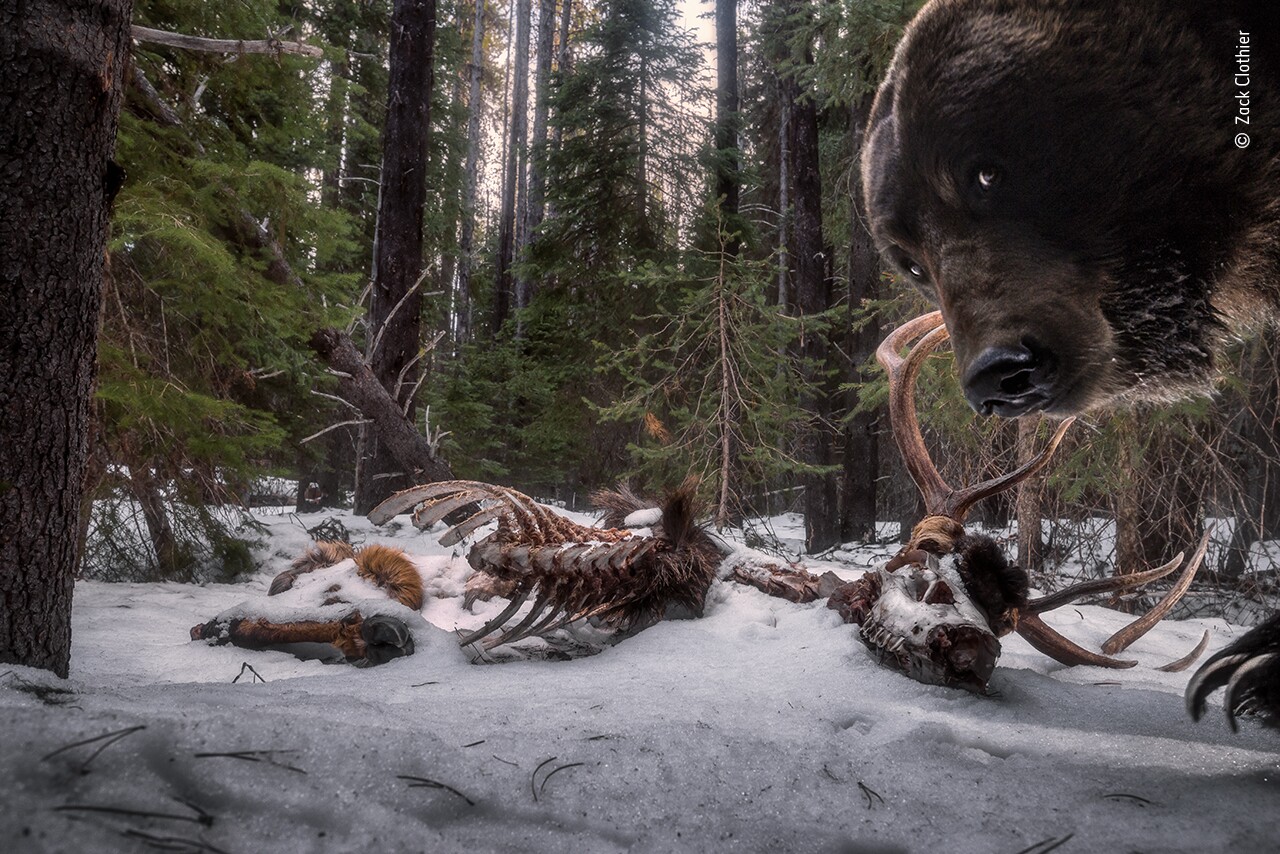For over half a century the Wildlife Photographer of the Year competition has consistently and spectacularly celebrated the natural world. This year’s crop of winners is no exception, from Svalbard reindeer going head to head to a frightening cluster of wandering spiders.
Initially founded in 1965 as an animal photography contest, the Wildlife Photographer of the Year competition is now run by London’s Natural History Museum. In its 57th year the competition gathered more than 50,000 entries from photographers in 95 countries.
 Winner - Urban Wildlife. The Spider Room. Brazilian wandering spider, photographed using forced perspective. Canon EOS 7D; Canon 14mm f2.8L lens; 1/250 sec at f11; ISO 400; Canon Macro Twin-Lite flash; custom made diffuser.Gil Wizen, Wildlife Photographer of the Year
Winner - Urban Wildlife. The Spider Room. Brazilian wandering spider, photographed using forced perspective. Canon EOS 7D; Canon 14mm f2.8L lens; 1/250 sec at f11; ISO 400; Canon Macro Twin-Lite flash; custom made diffuser.Gil Wizen, Wildlife Photographer of the YearThe competition spans more than a dozen diverse categories including Urban Wildlife, Bird Behavior, Mammal Behavior and Animal Portraits. Three new categories were added this year covering Natural Artistry, and larger landscape portraits of Oceans and Wetlands.
The overall Grand Prize winner this year went to a magical shot of camouflage groupers shooting out of a cloud of fertilized eggs. Captured by experienced underwater photographer Laurent Ballesta, the shot was the culminations of five years of expeditions to a site in French Polynesia.
 Grand Prize Winner, Winner - Underwater. Creation. Camouflage groupers. Nikon D5 + 17–35mm f2.8 lens at 17mm 1/200 sec at f11 ISO 1600 Seacam housing Seacam strobes1/200 sec at f11 ISO 1600 Seacam housing Seacam strobes.Laurent Ballesta, Wildlife Photographer of the Year
Grand Prize Winner, Winner - Underwater. Creation. Camouflage groupers. Nikon D5 + 17–35mm f2.8 lens at 17mm 1/200 sec at f11 ISO 1600 Seacam housing Seacam strobes1/200 sec at f11 ISO 1600 Seacam housing Seacam strobes.Laurent Ballesta, Wildlife Photographer of the Year“This photo captures the chaos as females release their eggs and males rush to fertilize them,” explains competition judge and evolutionary biologist Natiale Cooper. “We loved the sense of movement and peril in the image. This is such a beautiful and atmospheric photo, and it also highlights an event that is becoming rarer in our oceans. These groupers are endangered, as are many other grouper species, mainly as a result of overfishing.”
 Winner - Wetlands, The Bigger Picture. Road to Ruin. DJI Mavic 2 Pro + Hasselblad L1D-20c + 10.3mm f2.8 lens 1/500 sec at f2.8 (+0.3 e/v) ISO 100.Javier Lafuente, Wildlife Photographer of the Year
Winner - Wetlands, The Bigger Picture. Road to Ruin. DJI Mavic 2 Pro + Hasselblad L1D-20c + 10.3mm f2.8 lens 1/500 sec at f2.8 (+0.3 e/v) ISO 100.Javier Lafuente, Wildlife Photographer of the YearAnother highlight from this year’s winners is Javier Lafuente’s impressive drone shot of a wetland sliced in two by a road. Winning the new Wetlands – Bigger Picture category, the shot is a perfect composition to illustrate the sharp confrontation between natural environments and manmade objects.
 Winner - Animals in their Environment. Grizzly Leftovers. Nikon D610 + 18–35mm f3.5–4.5 lens at 25mm 1/160 sec at f10 (-1.7 e/v) ISO 1000 two Nikon SB-28 flashes self-made camera-trap system.ZACK CLOTHIER, Wildlife Photographer of the Year
Winner - Animals in their Environment. Grizzly Leftovers. Nikon D610 + 18–35mm f3.5–4.5 lens at 25mm 1/160 sec at f10 (-1.7 e/v) ISO 1000 two Nikon SB-28 flashes self-made camera-trap system.ZACK CLOTHIER, Wildlife Photographer of the YearIn the Animals in their Environment category, this intriguing shot of a cheeky Grizzly bear posing in front of a meal took out first prize. Take a look through our gallery at more stunning winners from this prestigious annual competition.
The Wildlife Photographer of the Year competition is developed and produced by the Natural History Museum, London. The top 100 images can be currently seen in person in the London museum, with the exhibition touring internationally over the coming months.
Source: NHM